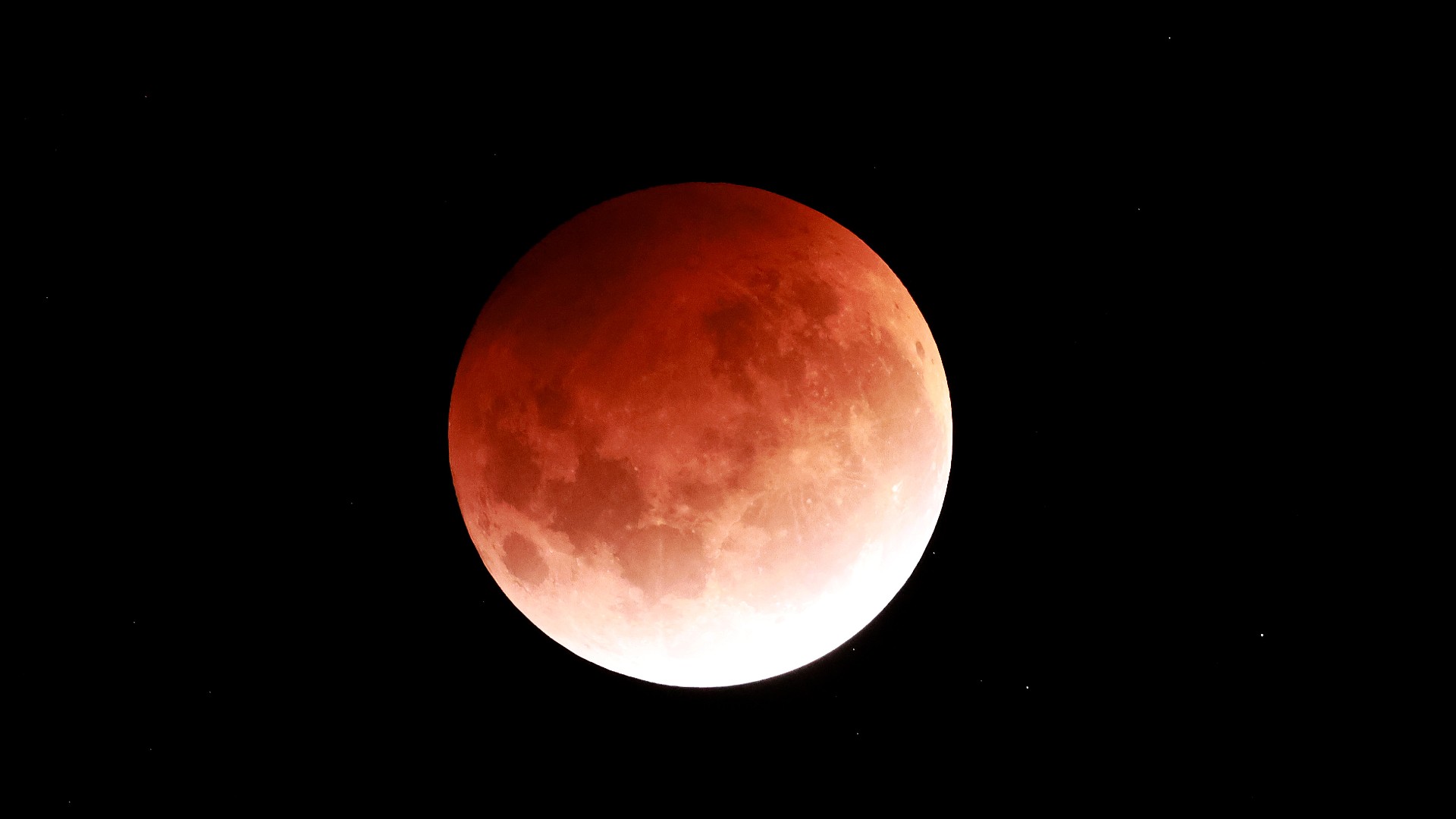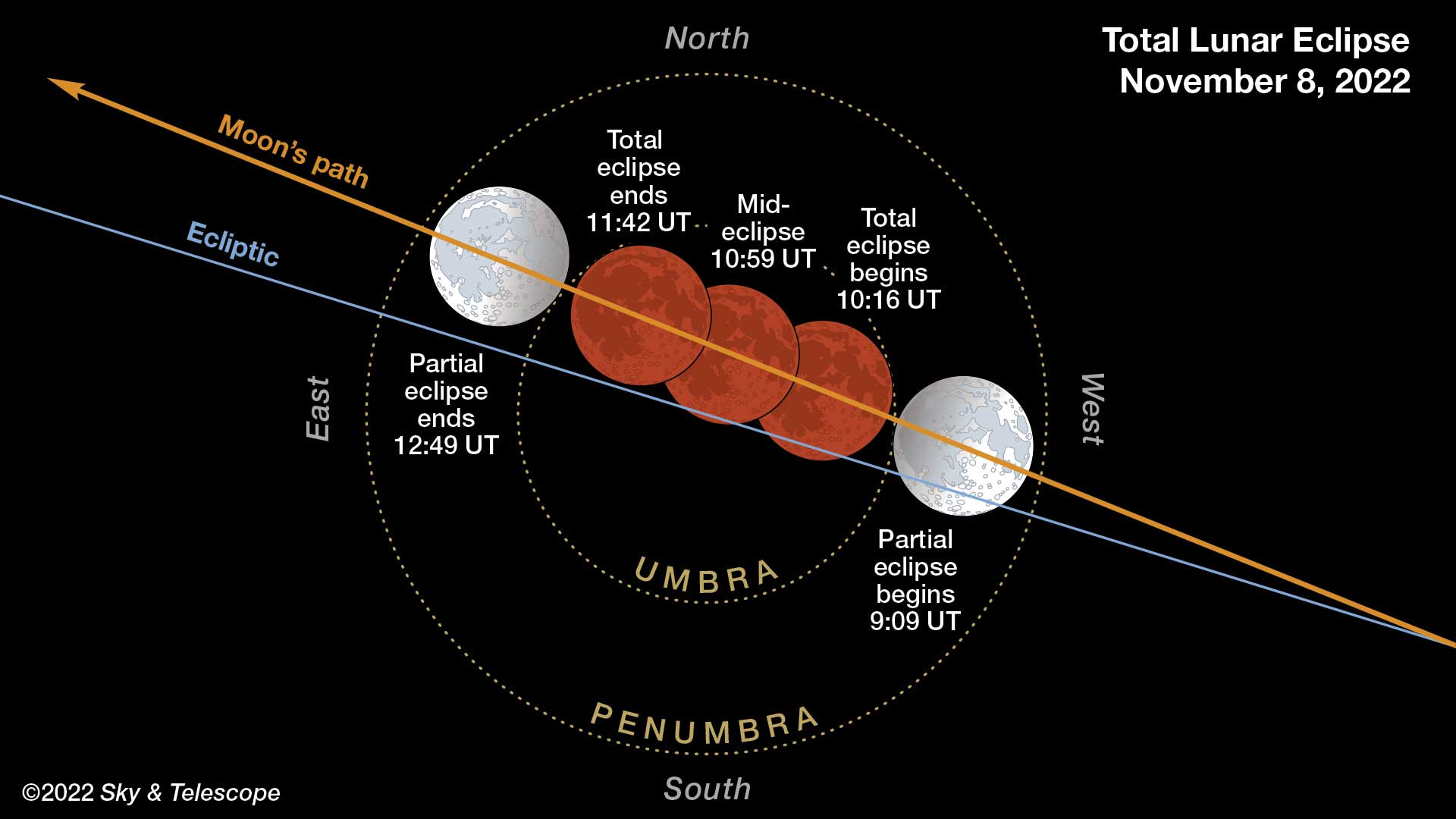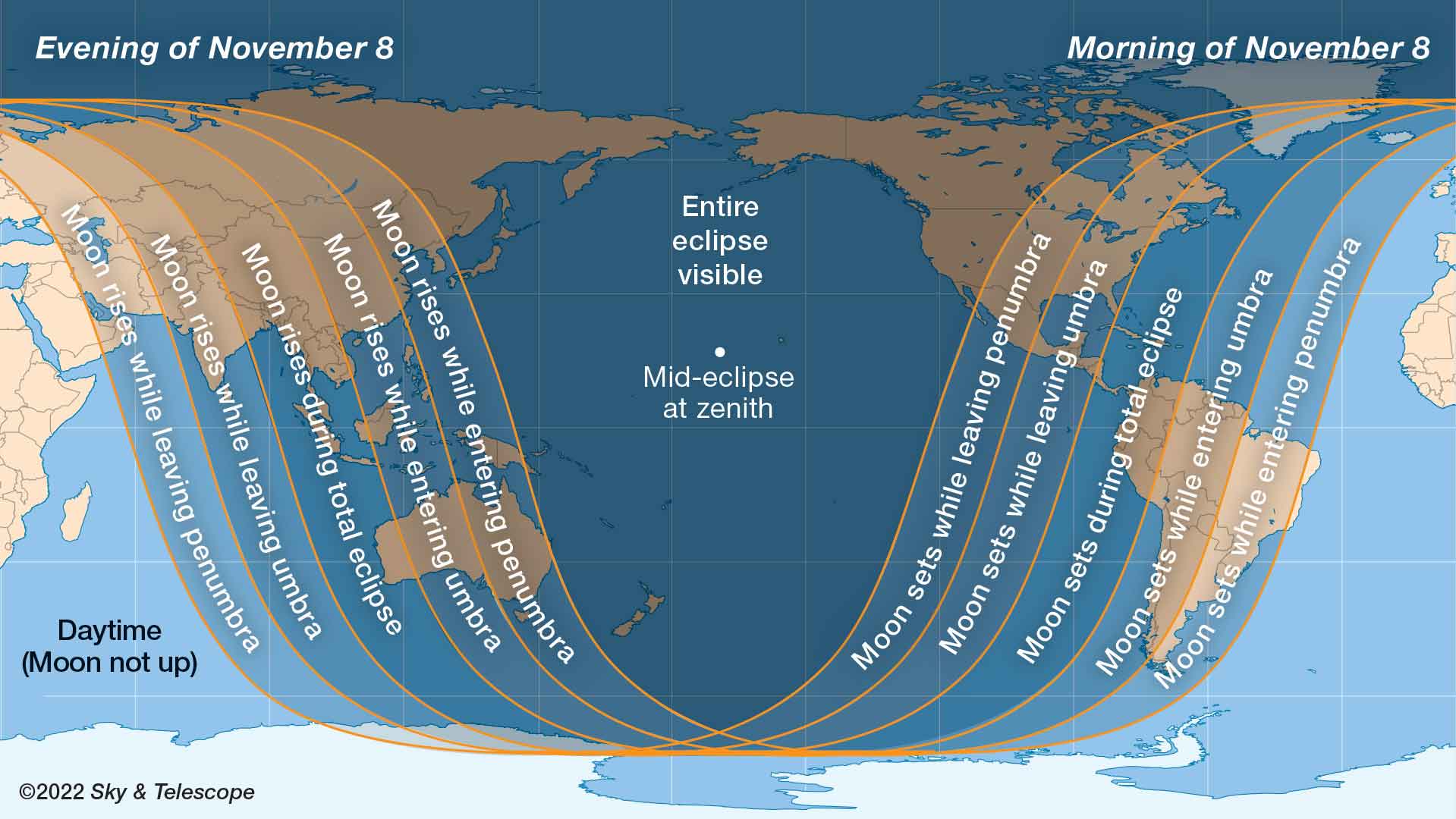Don't miss the Beaver Blood Moon lunar eclipse on Nov. 8
The moon will pass through Earth's shadow on Tuesday morning resulting in a total lunar eclipse.

On Tuesday, Nov. 8, 2022, the moon will pass through the shadow of Earth resulting in a total lunar eclipse that will be from Oceania, the Americas, Asia, and Northern Europe.
The Beaver Blood Moon lunar eclipse will begin at 4:10 a.m. EST (0810 GMT) and will end at approximately 7:49 a.m. EST (1149 GMT) when the moon once again emerges. The total eclipse period is shorter than this, however, and will last from 5:17 a.m. EST (0917 GMT) to 6:42 a.m. EST (1042 GMT). You can watch the total lunar eclipse on Space.com for free, courtesy of several webcasts from observatories across the United States that start at 3 a.m. EST (0800 GMT).
As the moon is in Earth's shadow, light from the sun is blocked making the moon appear less bright. As the eclipse proceeds, the moon's disk will eventually appear unilluminated directly by the sun, but some light still hits the moon.
Related: Lunar eclipses 2022: When, where & how to see them

Looking for a telescope for the lunar eclipse? We recommend the Celestron Astro Fi 102 as the top pick in our best beginner's telescope guide.
During the total lunar eclipse, the moon may take on a brownish red-hue that results from light from the sun hitting its disk after being bent around the Earth by our planet's atmosphere, which also filters out blue light.
Lunar eclipses occur when the sun, the Earth, and the moon are in a straight line with Earth sitting in the middle casting its shadow on the moon. The moon is at the opposite side of the Earth to the sun every full moon, so roughly once a month.
Despite this, eclipses don't happen every month because the moon orbits the Earth at an angle of around five degrees relative to the plane in which the Earth orbits the sun meaning the alignment between the three bodies isn't exact.
Get the Space.com Newsletter
Breaking space news, the latest updates on rocket launches, skywatching events and more!
When they do happen between two to three times a year lunar eclipses are visible anywhere on Earth that the moon is above the horizon. Observers can safely directly look at lunar eclipses, unlike solar eclipses.
The total lunar eclipse on Tuesday, Nov. 8, 2022, is the second and final lunar eclipse of this year with the previous eclipse of the moon happening on May 16.

How will the total lunar eclipse proceed?
The change in the moon's appearance as the eclipse proceeds is because the Earth's shadow is comprised of different parts.
The outer part of our planet's shadow is called the penumbra, and the inner part is the umbra. A total lunar eclipse happens when the moon is in the umbra — a much darker part of our planet's shadow.
On Tuesday, the moon will first enter the outer shadow or penumbra at 3:03 a.m. EST (0803 GMT) which will prompt its dimming. At around 4:10 a.m. EST (0810 GMT) it will enter the Earth's inner shadow — the umbra — and will be partially eclipsed. This results in a circular shadow advancing over the disc of the moon. At 5:17 a.m. EST (0917 GMT) the moon will be entirely within the umbra and this is when the total eclipse starts.

The total eclipse ends when the moon is part-way out of the umbra and once again edges into the penumbra meaning it is once again partially eclipsed. During this period Earth's shadow recedes across the disk of the moon.
The partial eclipse ends at 7:49 a.m. EST (1149 GMT) when the moon is totally out of Earth's inner shadow again. Following this, the moon leaves the penumbra at around 8:56 a.m. EST (1256 GMT).
The next lunar eclipse and the first of 2023 will occur on May 6. This will be a penumbral eclipse with only the Earth's fainter outer shadow falling on the moon's disk meaning it could be easy to miss.
Editor's note: If you snap a great photo of the Beaver Moon lunar eclipse or any other night sky sight you'd like to share with Space.com and our news partners for a story or image gallery, send images and comments to spacephotos@space.com.
Join our Space Forums to keep talking space on the latest missions, night sky and more! And if you have a news tip, correction or comment, let us know at: community@space.com.

Robert Lea is a science journalist in the U.K. whose articles have been published in Physics World, New Scientist, Astronomy Magazine, All About Space, Newsweek and ZME Science. He also writes about science communication for Elsevier and the European Journal of Physics. Rob holds a bachelor of science degree in physics and astronomy from the U.K.’s Open University. Follow him on Twitter @sciencef1rst.









